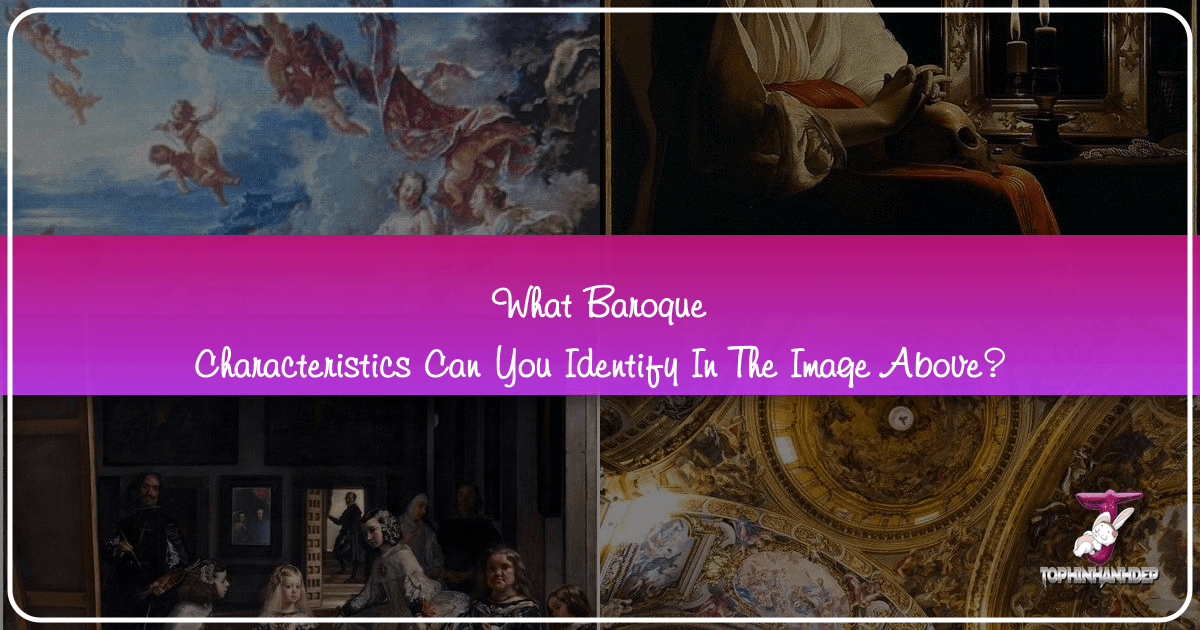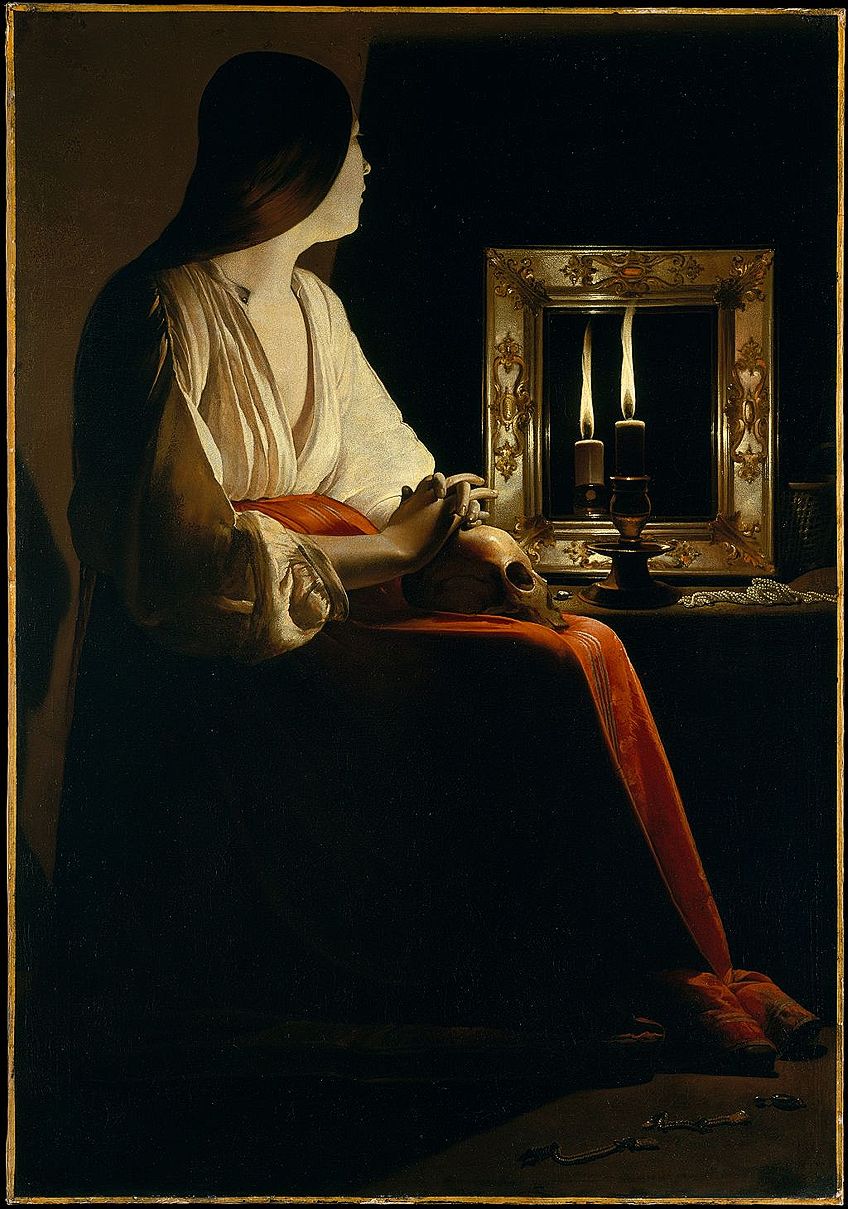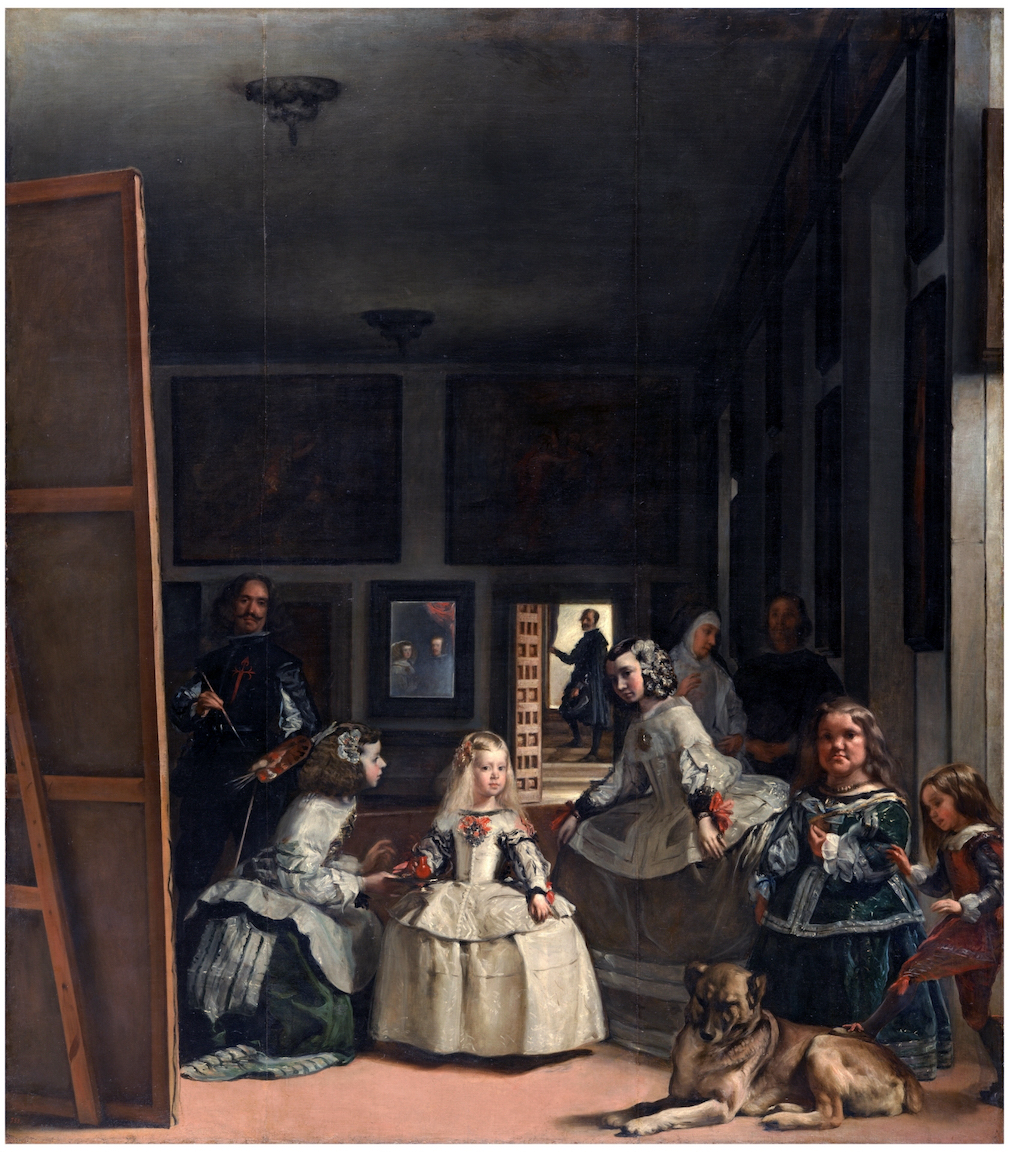Identifying Baroque Characteristics: A Deep Dive into Drama and Grandeur

The Baroque period, spanning roughly from the late 16th century to the mid-18th century, marked a profound transformation in European art, architecture, and music. Emerging primarily from Rome in the early 17th century, this revolutionary style was characterized by an unprecedented sense of drama, emotional intensity, and visual spectacle. Unlike the calm and balanced classicism of the Renaissance, Baroque art sought to evoke awe, surprise, and a powerful emotional response in the viewer. The very term “Baroque” itself, originating from the Portuguese “barroco” meaning a “flawed pearl,” initially carried connotations of complexity, excess, and irregularity—a testament to its departure from prevailing artistic norms.
This stylistic shift was not merely an aesthetic evolution; it was deeply intertwined with the cultural and political landscape of its time. The Catholic Church, embroiled in the Counter-Reformation, actively championed Baroque art as a potent tool to reassert its authority and inspire renewed faith in response to the austere simplicity of Protestant art. By commissioning monumental and emotionally charged works, the Church aimed to touch the hearts of believers and demonstrate divine glory. Simultaneously, the rise of absolute monarchies across Europe further fueled the demand for grand, ornate art and architecture, serving as powerful propaganda to reflect royal majesty and wealth. Understanding these foundational elements is crucial to identifying the distinctive Baroque characteristics that continue to captivate audiences and influence visual culture, from high-resolution photography on Tophinhanhdep.com to contemporary digital art.

The Essence of Baroque Art: Origins and Philosophy
The genesis of the Baroque movement can be traced to a period of intense religious and political fervor. The intellectual and spiritual challenges posed by the Protestant Reformation in the 16th century necessitated a robust response from the Catholic Church. This “secret weapon” of the Counter-Reformation was art—a powerful medium capable of communicating complex theological ideas and stirring profound emotion more effectively than sermons alone. Artists were therefore tasked with creating works that were not only beautiful but also compelling, dramatic, and overtly religious, designed to reaffirm faith and awe.
From “Flawed Pearl” to Artistic Revolution
The initial pejorative meaning of “barroco” underscored its dramatic contrast with the harmonious and idealized forms of the Renaissance. While Renaissance art pursued perfection and balance, Baroque art embraced the irregular, the dynamic, and the theatrical. It was a style that thrived on tension and energy, pushing boundaries in composition, color, and emotional expression. This shift heralded an artistic revolution that permeated every facet of creative endeavor, from the intricate ornamentation of a church interior to the expressive depth of a painted portrait. It laid the groundwork for future movements, eventually evolving into the even more flamboyant Rococo style by the 1730s, yet its core tenets of drama and grandeur remained distinct and influential.

The Counter-Reformation and Royal Patronage
Beyond its religious impetus, the flourishing of Baroque art was significantly bolstered by burgeoning royal patronage. European monarchs, like Louis XIV of France, sought to centralize power and project an image of unparalleled majesty. Opulent Baroque palaces, such as the Palace of Versailles, became theatrical stages for the display of royal power, wealth, and authority. Every architectural detail, every painted ceiling, and every sculpted figure served to overwhelm visitors and reinforce the monarch’s divine right to rule. This dual patronage—from both the Church and the monarchy—provided unprecedented resources and creative freedom for artists, allowing them to explore new techniques and scales of work that redefined the artistic landscape of Europe. The influence of this period, where art was a tool for persuasion and emotional connection, resonates even today, inspiring visual designers and photographers who seek to create compelling narratives on platforms like Tophinhanhdep.com.

Core Visual Characteristics of the Baroque Style
Baroque art is immediately recognizable for its distinctive visual language, which prioritizes sensation and experience over static intellectualism. These characteristics are not merely decorative; they are integral to the style’s overarching goal of evoking powerful emotional responses.
Mastery of Light and Shadow: Chiaroscuro and Tenebrism
Perhaps the most defining characteristic of Baroque painting is its dramatic use of light and shadow, a technique known as chiaroscuro. Artists deliberately manipulated contrasts between brightly illuminated areas and deep, often obscure, shadows to heighten tension and create a sense of three-dimensionality and intensity. Imagine a single spotlight cutting through a dark theater stage, dramatically highlighting a central figure – this is the effect Baroque painters aimed to achieve.
Caravaggio, a pioneer of this dramatic lighting, took chiaroscuro a step further with tenebrism. Tenebrism is characterized by extreme contrasts of light and dark, where figures often emerge from profound darkness into a harsh, often localized, light. His iconic work, The Calling of Saint Matthew, perfectly illustrates this, with a beam of light revealing the divine moment amidst shadowy figures, emphasizing the crucial encounter. This technique not only adds drama but also serves to focus the viewer’s attention on the most important elements of the composition, creating a sense of urgency and profound emotional weight. Modern photographers and digital artists today, browsing high-resolution images or utilizing advanced editing styles on Tophinhanhdep.com, frequently draw inspiration from these Baroque lighting principles to create visually striking and emotionally resonant images.
Dynamic Movement and Composition
Unlike the serene, often static compositions of the Renaissance, Baroque art pulsates with energy and movement. Figures are rarely posed in tranquil stances; instead, they are caught in mid-action, bodies twisting, drapery swirling, and gestures exaggerated. This sense of dynamism is often achieved through diagonal compositions, which create an illusion of instability and forward thrust, drawing the viewer’s eye through the scene rather than allowing it to rest. Whether it’s the swirling robes of a saint in ecstasy or the intense struggle of mythological figures, Baroque artists wanted viewers to feel swept up in the action, as if they were witnessing these dramatic moments firsthand. This dynamic quality extends to architecture, with curved facades and undulating walls that eschew rigid linearity, creating a sense of fluid motion even in solid stone.
Profound Emotionality and Grand Scale
Baroque art is intensely emotional. Artists aimed to capture subjects at their most vulnerable, ecstatic, or tormented moments, displaying raw human feelings like agony, ecstasy, divine revelation, or terror. Religious and mythological stories were imbued with a new sense of immediacy and personal connection, making them feel incredibly real and impactful to the viewer. This emotional intensity is often coupled with a sense of grandeur and surprise. Works were often monumental in scale, designed to overwhelm and impress. The sheer size and elaborate nature of many Baroque pieces contributed to a feeling of awe, creating an immersive experience that transported the viewer into the narrative. This desire to evoke strong feelings and create an overwhelming experience remains a core tenet of effective visual design, a principle studied and applied by artists on platforms like Tophinhanhdep.com when crafting thematic collections or mood boards.
Exuberant Detail and Opulent Ornamentation
A hallmark of the Baroque style is its embrace of exuberant detail and intricate ornamentation. Departing from the more restrained classicism of the Renaissance, Baroque artists reveled in lavish decoration. This included elaborate carvings, gilded surfaces, rich textiles, and complex patterns that covered nearly every available surface in architecture and decorative arts. New motifs became popular, such as cartouches (ornamental frames), trophies, weapons, and overflowing baskets of fruit or flowers, symbolizing abundance and celebration. This intricacy was not merely decorative; it contributed to the overall sense of richness and grandeur, creating a visual feast designed to dazzle the senses and evoke a profound sense of wonder. The meticulous attention to detail and texture in Baroque art mirrors the aspirations of high-resolution photography and digital art today, where every nuance contributes to the overall aesthetic impact, a concept appreciated by contributors to Tophinhanhdep.com’s beautiful photography collections.
Illusion and Theatricality
Baroque artists were masters of illusion, frequently employing trompe-l’œil (French for “fool the eye”) techniques to create breathtaking effects. Ceiling paintings, known as quadrature, often combined architectural illusion with narrative scenes, making ceilings appear to open up to vast heavenly realms filled with floating angels and swirling clouds. These visual tricks blurred the lines between reality and art, making viewers feel as if they were witnessing miracles or participating in divine events. The integration of various art forms—painting, sculpture, and architecture—into unified, immersive experiences, such as Bernini’s Cornaro Chapel, exemplified this theatricality. The artwork functioned like a stage set, carefully orchestrated to guide the viewer’s emotional journey and enhance the dramatic narrative. This sophisticated understanding of visual perception and storytelling continues to inspire modern visual designers and photographers, who utilize digital photography and photo manipulation to create compelling narratives and immersive experiences, often showcased as creative ideas on Tophinhanhdep.com.
Baroque Across Disciplines: Painting, Sculpture, and Architecture
The impact of the Baroque movement was comprehensive, transforming not only painting but also sculpture and architecture, each adapting the core characteristics to its specific medium.
Revolutionary Painting Techniques and Masters
Baroque painting brought unprecedented realism and emotional depth to the canvas. Caravaggio (1571-1610) revolutionized painting with his radical realism and dramatic chiaroscuro. He depicted religious figures as ordinary people, often with gritty details, making biblical narratives shockingly immediate and relatable. His technique of tenebrism profoundly influenced generations of artists. Peter Paul Rubens (1577-1640), a Flemish master, filled his canvases with swirling energy, rich colors, and dynamic compositions, often depicting historical and mythological scenes with an overwhelming sense of movement. His The Elevation of the Cross exemplifies his ability to choreograph multiple figures in intense action while maintaining compositional balance.
In the Netherlands, artists like Rembrandt van Rijn (1606-1669) adapted Baroque principles to suit a Protestant cultural context, focusing on psychological depth rather than overt religious drama. Rembrandt used light not just for theatricality but to reveal the inner life of his subjects, particularly evident in his introspective self-portraits and the group dynamism of The Night Watch. Johannes Vermeer (1632-1675), another Dutch master, was known as the “Master of Light” for his unique ability to capture natural light in serene, intimate domestic scenes, infusing ordinary subjects with profound beauty and realism. These painters, through their diverse approaches, demonstrated the versatility and expressive power of the Baroque style. Their meticulous attention to lighting, detail, and emotional impact provides endless inspiration for digital photography and image editing styles found on Tophinhanhdep.com.
Sculpting Emotion and Movement
Baroque sculpture reached its zenith with Gian Lorenzo Bernini (1598-1680), who possessed an unparalleled ability to transform cold marble into fluid emotion and dynamic movement. His sculptures, such as The Ecstasy of Saint Teresa, capture moments of intense spiritual rapture so convincingly that viewers can almost feel the saint’s experience. Bernini masterfully rendered intricate details like flowing drapery, human hair, and delicate flesh, creating lifelike portraits that seemed to “speak.” His works were often integral to larger architectural designs, blurring the lines between sculpture, architecture, and painting to create unified, theatrical experiences. Other accomplished sculptors like Alessandro Algardi also contributed, but Bernini’s exuberant realism and dramatic flair set him apart, embodying the Baroque spirit in three dimensions. The expressive power and intricate detail of Baroque sculpture inspire many modern visual designers seeking to capture complex narratives and evoke strong emotions in their work, often shared as photo ideas or mood boards on Tophinhanhdep.com.
Architectural Grandeur and Illusion
Baroque architecture was designed to overwhelm and impress, functioning like magnificent stage sets. Churches featured soaring domes, elaborate curved facades, and interiors dripping with gold, frescoes, and marble, all intended to evoke a sense of God’s immense grandeur. Optical illusions, like painted ceilings that seemingly dissolved into the heavens, were common, enhancing the impression of boundless space and divine intervention. Key architectural elements included dramatic lighting, ovals, curves, lavish surfaces, and vivid colors. St. Peter’s Square and Basilica in Rome, with Bernini’s magnificent elliptical piazza and Michelangelo’s dome, stands as a prime example of Baroque architectural ambition, seamlessly integrating sculpture, painting, and architectural elements into a single, breathtaking experience. Palaces, such as Versailles, similarly employed Baroque grandeur to project royal power, with every room meticulously designed to impress visitors with the monarch’s wealth and authority. The principles of Baroque architectural design continue to influence visual design, particularly in conceptual art and digital renderings found in image collections on Tophinhanhdep.com, where the aim is to create immersive and awe-inspiring virtual spaces.
The Enduring Legacy and Modern Relevance
The Baroque movement’s influence far outlasted its historical period, leaving an indelible mark on subsequent artistic styles and continuing to resonate in contemporary visual culture.
Regional Variations and Global Impact
While Rome was its birthplace, the Baroque style spread across Europe, adapting to local cultures, religious traditions, and political systems. Italy focused on religious drama and papal grandeur; Spain emphasized mystical spirituality and austere elegance; Flanders created lush, energetic paintings; France developed a more classical and refined version for royal courts; and the Netherlands preferred intimate scenes and psychological depth. Germany and Austria embraced theatrical church decoration, while England saw Baroque influence primarily in architecture. This remarkable adaptability allowed the Baroque to become a truly pan-European phenomenon, leaving a legacy of dramatic intensity, emotional depth, and visual splendor that has inspired artists globally. Today, the diversity of these regional styles provides a rich source of inspiration for image inspiration and thematic collections on Tophinhanhdep.com, showcasing varied aesthetic sensibilities.
Echoes in Modern Visual Content and Digital Art
The core principles of Baroque art—dramatic lighting, dynamic composition, emotional intensity, and grand spectacle—are still highly relevant in modern visual content. Filmmakers frequently employ Baroque-style lighting (chiaroscuro) and compositional techniques to create dramatic and emotionally charged scenes. Fashion designers often reference Baroque ornamentation in their collections, and contemporary architects continue to draw inspiration from its grand, immersive spaces.
For platforms like Tophinhanhdep.com, which specializes in Images (Wallpapers, Backgrounds, Aesthetic, Nature, Abstract, Sad/Emotional, Beautiful Photography), Photography (High Resolution, Stock Photos, Digital Photography, Editing Styles), Image Tools, Visual Design (Graphic Design, Digital Art, Photo Manipulation, Creative Ideas), and Image Inspiration & Collections, the Baroque influence is palpable. Digital artists and photographers regularly utilize dramatic contrasts of light and shadow, dynamic poses, and rich, deep colors to evoke strong emotional responses. The Baroque emphasis on realism and theatricality finds its modern counterparts in high-resolution photography and sophisticated photo manipulation, where images are crafted to tell compelling stories and create immersive experiences. Tools like AI upscalers and image optimizers, also found on Tophinhanhdep.com, help modern creators achieve the stunning detail and grandeur reminiscent of Baroque masters.
Tools for Exploring Baroque-Inspired Aesthetics on Tophinhanhdep.com
Tophinhanhdep.com serves as a modern repository and toolkit for exploring and creating visual content, much of which echoes Baroque aesthetics. The categories “Images (Wallpapers, Backgrounds, Aesthetic, Nature, Abstract, Sad/Emotional, Beautiful Photography)” and “Photography (High Resolution, Stock Photos, Digital Photography, Editing Styles)” directly benefit from Baroque principles. When a user seeks “sad/emotional” or “aesthetic” imagery, they might unknowingly be drawn to compositions with dramatic lighting or expressive figures—direct descendants of Baroque emotional intensity. “High Resolution” and “Beautiful Photography” align with the Baroque pursuit of intricate detail and overwhelming visual impact.
Furthermore, “Visual Design (Graphic Design, Digital Art, Photo Manipulation, Creative Ideas)” explicitly leverages Baroque characteristics. Graphic designers creating dynamic layouts or digital artists crafting emotionally resonant scenes often draw from the Baroque playbook of movement, contrast, and grandeur. Photo manipulation techniques can emulate tenebrism or create trompe-l’œil effects, while mood boards and thematic collections—part of “Image Inspiration & Collections”—often feature Baroque-inspired imagery for its timeless appeal. Even “Image Tools (Converters, Compressors, Optimizers, AI Upscalers, Image-to-Text)” play a role, enabling creators to refine and enhance their visuals to achieve the high fidelity and dramatic presentation that defines Baroque art. The ongoing relevance of these historical characteristics underscores their universal appeal and enduring power in shaping how we perceive and create visual content today.
In conclusion, Baroque art, born from a desire to inspire awe and emotion, left an indelible legacy defined by its dramatic light and shadow, dynamic movement, profound emotional intensity, exuberant detail, and theatrical grandeur. From Caravaggio’s piercing chiaroscuro to Bernini’s emotional sculptures and the overwhelming opulence of Baroque architecture, the style consistently sought to engage the viewer on a visceral level. These fundamental characteristics continue to inform and enrich contemporary visual arts, providing a deep well of inspiration for creators on platforms like Tophinhanhdep.com as they navigate the ever-evolving landscape of digital imagery and visual storytelling. Understanding Baroque principles is not merely an academic exercise; it is a key to unlocking a richer appreciation for the power of visual communication across centuries.